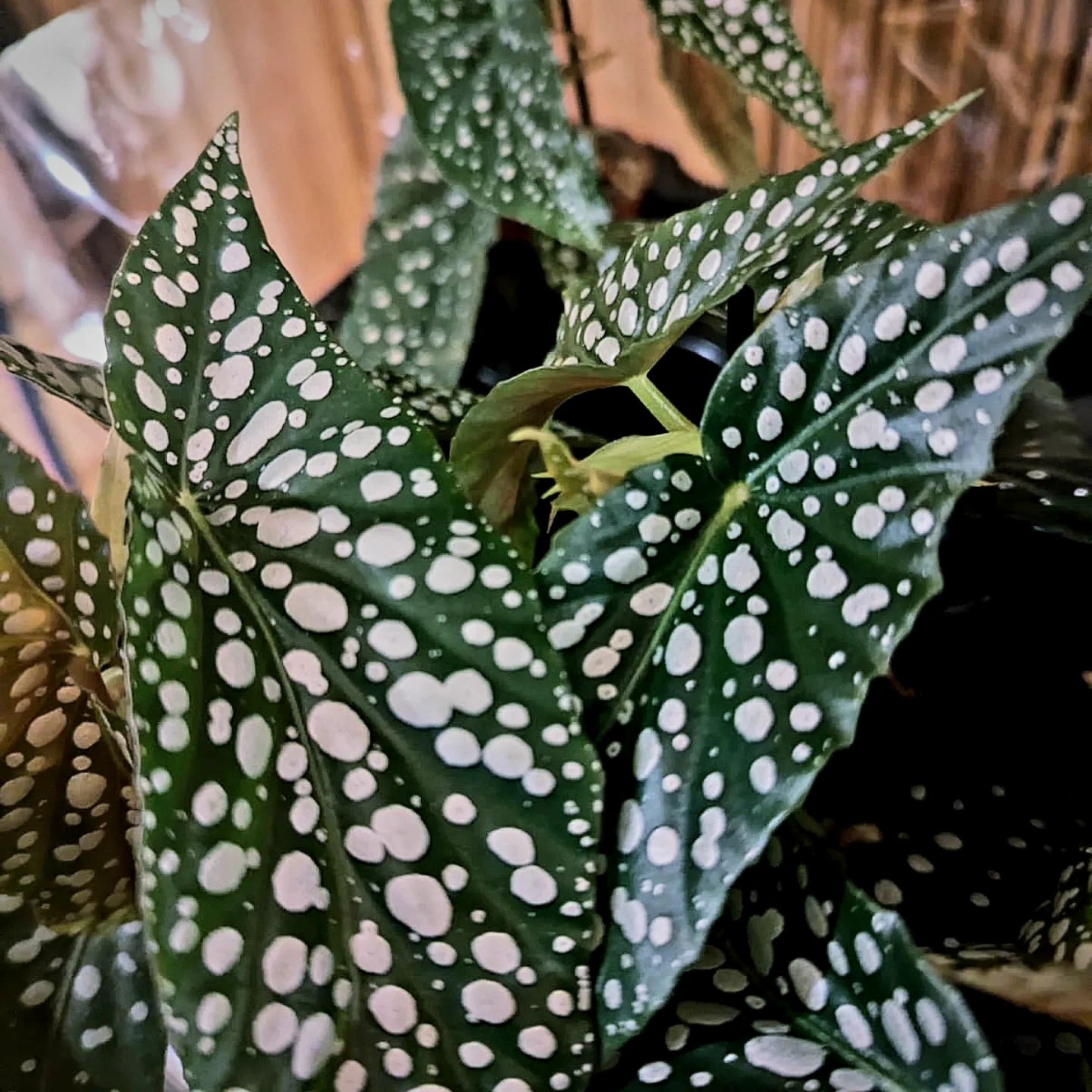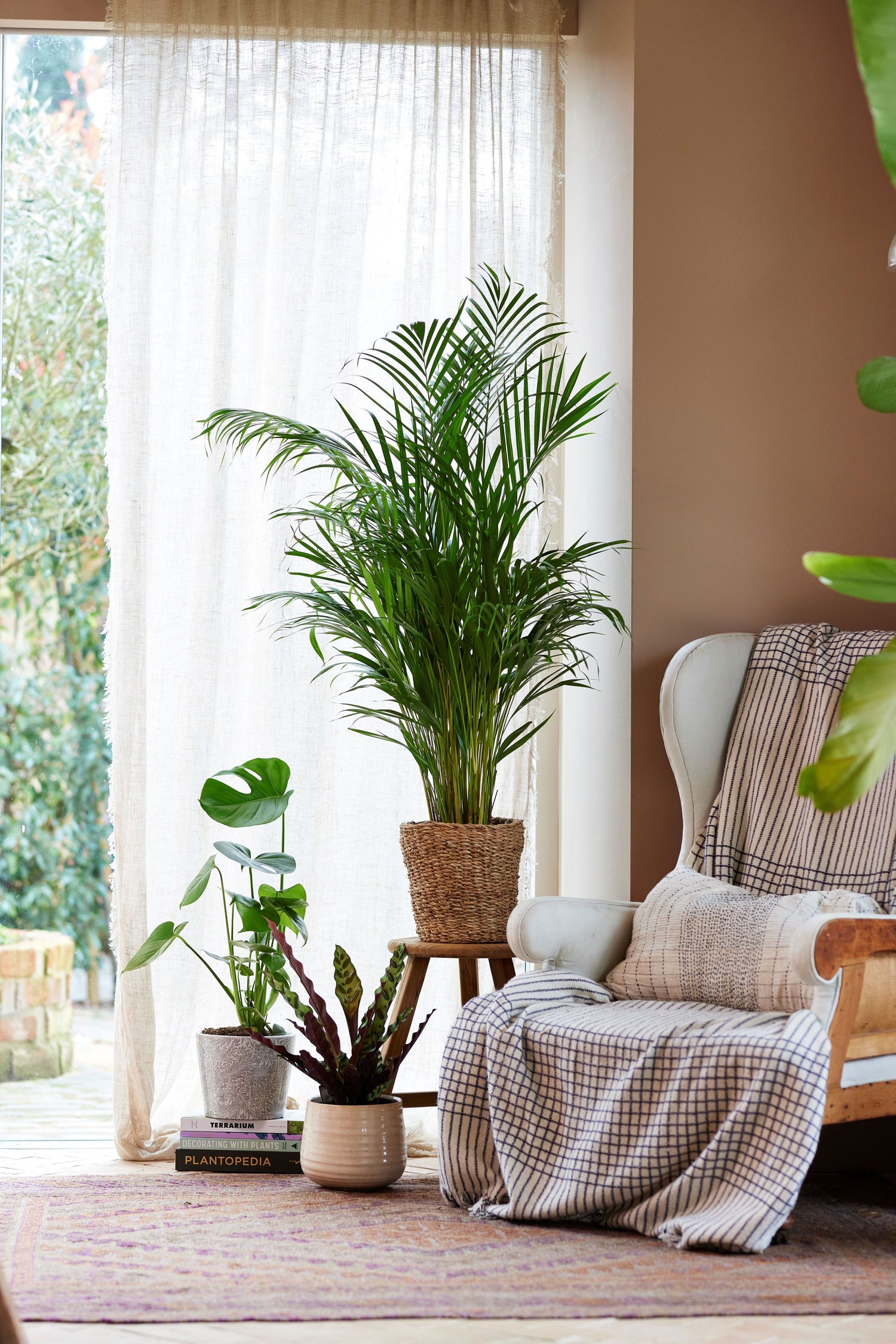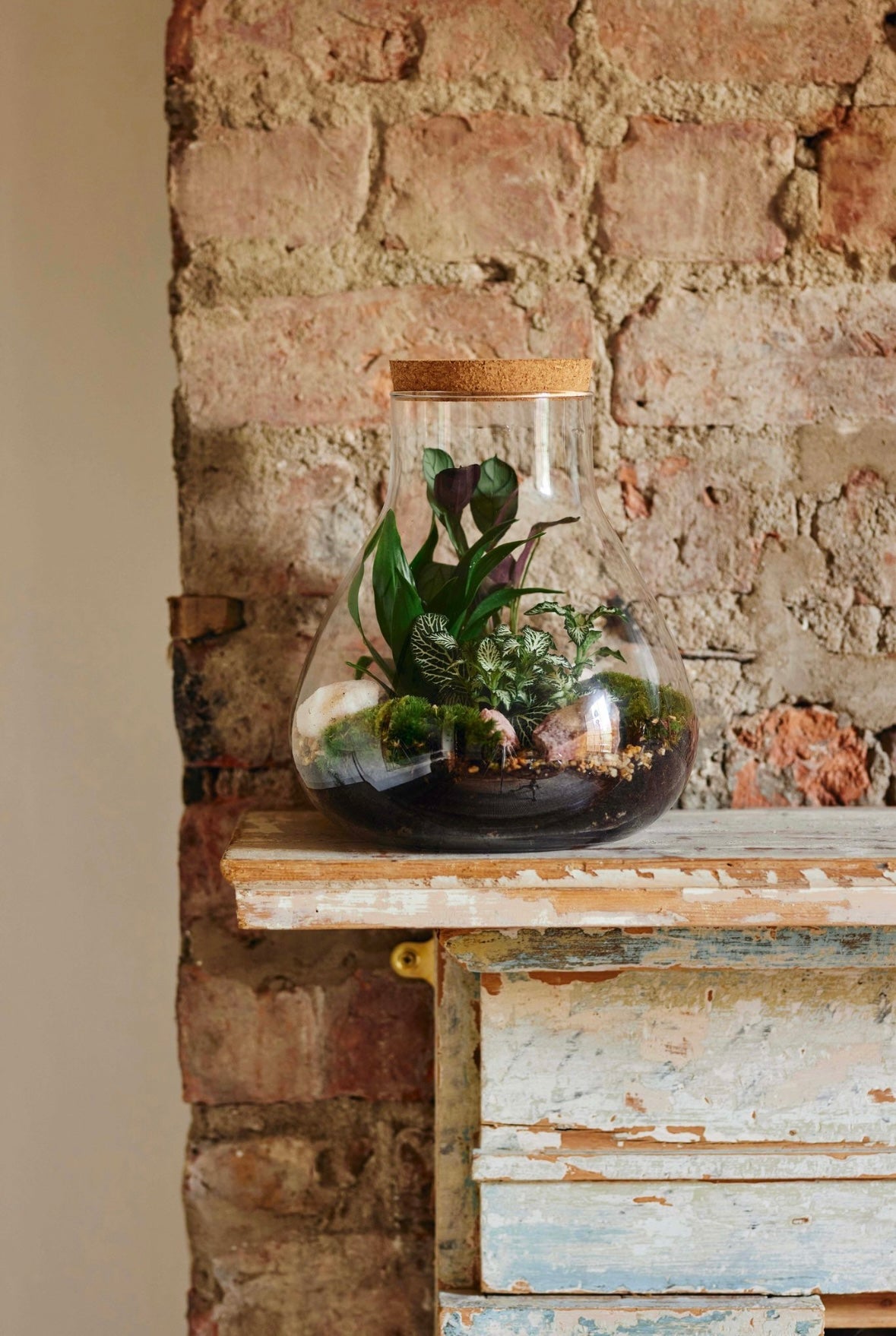Begonia is an enormous genus of plants, containing over 2000 species. The genus has been recognised since the 1700s, and was named by Charles Plumier, a botanist and plant collector for King Louis XIV of France. The name Begonia was coined in tribute to Michel Bégon, the governor of Haiti at the time, who recommended Plumier to King Louis XIV for his position.
From the tuberous varieties of the 19th and early 20th centuries and their rich clusters of flowers to the rex Begonia and their vividly-patterned leaves which might appear more at home in a 1970s living room, these plants have never quite fallen out of popularity since their introduction to Europe. Now, the current favourites are the spotted Begonia maculata, with its perfectly instagrammable leaves, and rare varieties best grown in terrariums such as the Begonia pavonina with its stunning iridescence, or the alien-looking Begonia dracopelta.
As tropical plants from the jungles of South America and South-East Asia, Begonia may seem challenging to grow in the UK, particularly with our cold and gloomy winters, but they can be easier than you might expect!
Cane-type Begonia (species with an upright growth pattern and rigid, bamboo-like stem), such as Begonia albo-picta (see image above) and Begonia maculata tend to be the easier varieties to grow in the home, so we’ll focus on those here.
Cane-type Begonia are best grown in a position with plenty of bright, indirect sunlight, and a very small amount of direct sun. An east- or west-facing window suits them well - my best results with Begonia have been in a west-facing, frosted bathroom window!
Begonia require stability and can lose leaves or turn crispy when moved around too much, so avoid placing them near drafts and once you’ve found a spot with adequate light and humidity, leave them there and try not to move them.
High humidity is essential for these tropical plants, though Begonia can be prone to root rot if their soil is allowed to remain wet for too long. Water only when the top inch or so of soil has dried out, and avoid letting water sit on the leaves unless your space has plenty of airflow and ventilation. Regular use of a fan will help to avoid any fungal or mould issues, which these plants can be susceptible to.
As you can see, Begonia care doesn’t need to be complicated! With adequate light, humidity and stable conditions, these striking plants can provide a gorgeous centrepiece for your plant collection for years to come!





